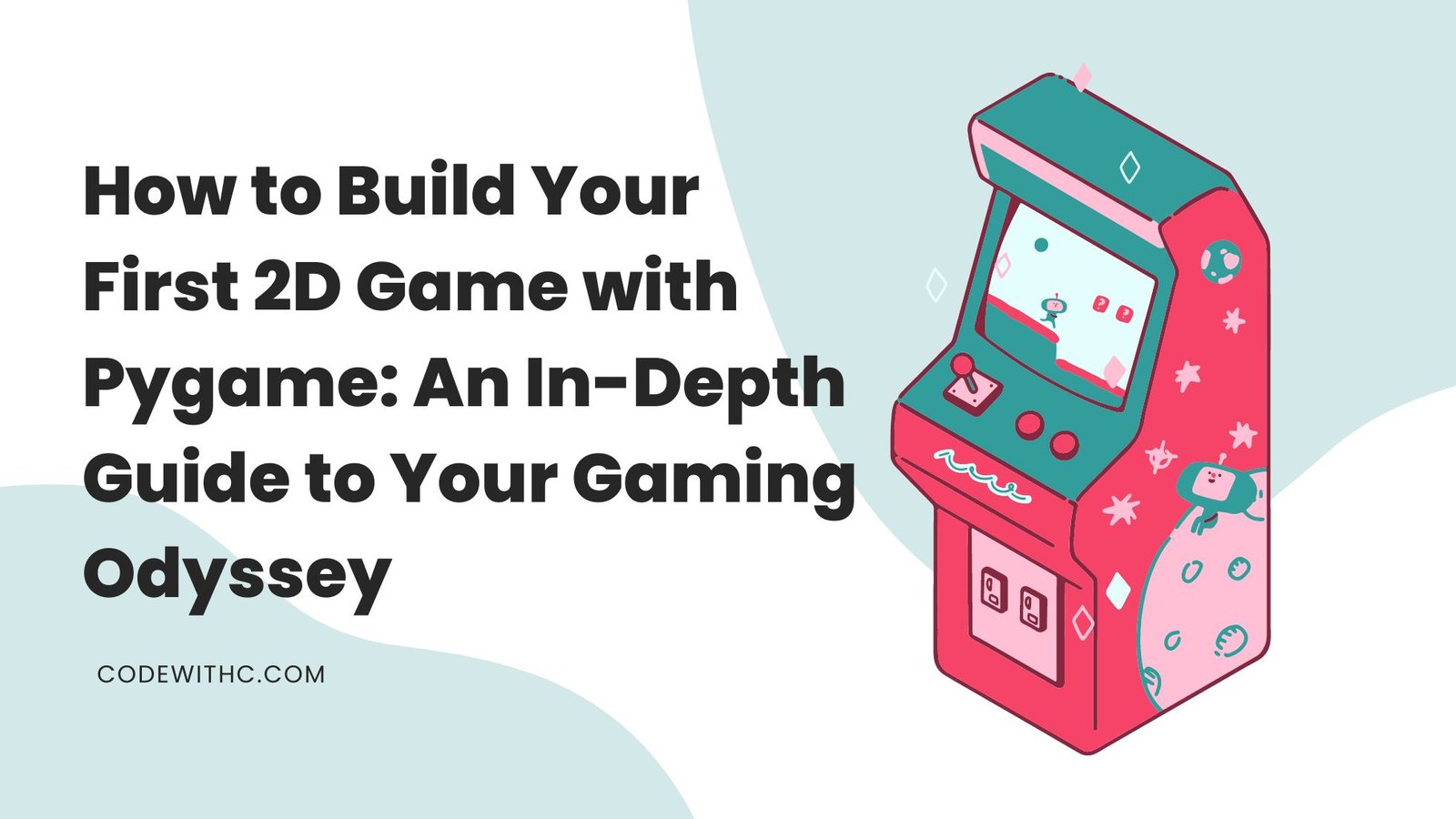Introduction: Level Up from Gamer to 2D Game Dev
Imagine, just imagine, You’re huddled in your cozy gaming lair, LED lights setting the mood. You’re deep into a late-night gaming marathon, blasting through levels like a pro. The sound of virtual explosions fills the room through your high-end headphones, creating an immersive experience. But as you navigate through another dungeon, dodging fireballs and collecting gold coins, a light bulb goes off in your head. Why be just a player when you can be the creator? Why navigate dungeons someone else designed when you can craft your own? ?✨
That’s the allure of game development. It’s a world where your imagination is the only limit. You can create universes from scratch, design characters, and construct storylines that players can live through. You get to be the architect, the storyteller, and the strategist, all rolled into one. And what better way to start this creative journey than with Pygame, a library so beginner-friendly that you can create your first game in just a few hours.
But hold up, what even is Pygame? Think of it as the set of training wheels for aspiring game developers. It’s a Python library that simplifies the complicated aspects of game creation, letting you focus on what truly matters: being creative. You get to dip your toes into game mechanics, graphics, and sound design without drowning in complex code. The best part? It comes with a built-in community of passionate developers ready to help you out, so you’re never truly alone on this journey.
So, if you’re ready to evolve from a game enthusiast to a game creator, you’ve come to the right place. Let’s embark on this epic quest together. Are you in? ?
The Allure of Pygame for 2D Game Dev
If Python is the comfort food of programming languages, then Pygame is the cherry on top. It’s an open-source framework that lets you whip up games and multimedia programs. The real kicker? You don’t need to be a coding guru to get started. It’s beginner-friendly but packed with features—kinda like a Swiss Army knife for budding game developers.
Why Pygame is Your Best Bet
You see, Pygame is like that one friend who’s always got your back. Need to render 2D graphics? Check. Handle user input? Double-check. Manage game states? Triple check! It’s got everything you need for a solid start.
Get Plugged into the Community
Ever feel stuck while coding? Fret not. The Pygame community’s got your back. It’s like this digital utopia filled with tutorials, forums, and open-source projects. And let’s be honest, who doesn’t love a good support system?
Setting the Scene: Initial Configurations
Assuming you’ve got Python already installed, let’s dive right into configuring Pygame.
Downloading from Pygame’s Website
Here’s a twist: Instead of pip, download the Pygame installer directly from the website. Just head over to pygame.org/download.shtml, pick the version that tickles your fancy, and follow the setup wizard.
Verifying the Setup
To ensure Pygame’s installed properly, open your Python shell and run:
import pygame
print(pygame.ver)
Expected Output:
2.x.x
Building a Whimsical Space Shooter 2D game ?
Designing the Game Window
Your first mission is to create a window where your game will come to life.
import pygame
pygame.init()
win = pygame.display.set_mode((600, 400))
Crafting the Spaceship
Let’s create a spaceship that’ll be the star of our game.
spaceship = pygame.image.load('spaceship.png')
def draw_ship(x, y):
win.blit(spaceship, (x, y))
x, y = 300, 300
while True:
for event in pygame.event.get():
if event.type == pygame.QUIT:
pygame.quit()
quit()
draw_ship(x, y)
pygame.display.update()
Debugging: What to Do When Things Go South
The Window Just Won’t Open
If you’re facing this issue, double-check that Pygame was initialized correctly. Make sure you’ve run pygame.init() before creating the window.
Spaceship Not in Sight
If your spaceship isn’t showing up, validate that the image file is in the correct directory. Also, ensure you’ve loaded the image using pygame.image.load().
In Conclusion: Your Game Dev Odyssey is Just Beginning
Wow, we’ve come a long way, haven’t we? You started off as a gamer with a dream and now you’re an indie developer with your own game, even if it’s a simple one. But let’s be real, it’s not about how complex or flashy your first game is. What truly matters is that it’s your game, a product of your imagination and hard work. That’s more fulfilling than any high score or in-game achievement, don’t you think? ?
The journey ahead is both exciting and challenging. You’ll run into bugs that seem impossible to fix. You’ll get stuck on game mechanics that just won’t work as you planned. You’ll scrap entire levels and start from scratch. And that’s okay. In fact, it’s more than okay—it’s a rite of passage for every game developer. Each challenge you overcome makes you better at your craft. It’s like leveling up in real life!
Now, armed with the basics of Pygame and game development, the world—or should I say, the universe—is your oyster. You can expand on your first project or venture into new genres. Maybe a role-playing game with a gripping storyline? Or a puzzle game that challenges the mind? The possibilities are endless.
Remember, the most important skill in game development is not coding; it’s perseverance. It’s the willingness to keep experimenting, keep failing, and keep learning. So go ahead, close this blog, fire up your code editor, and create. Turn your gaming dreams into gaming realities. From one game dev to another, welcome to this wondrous, frustrating, and incredibly rewarding world. ??






